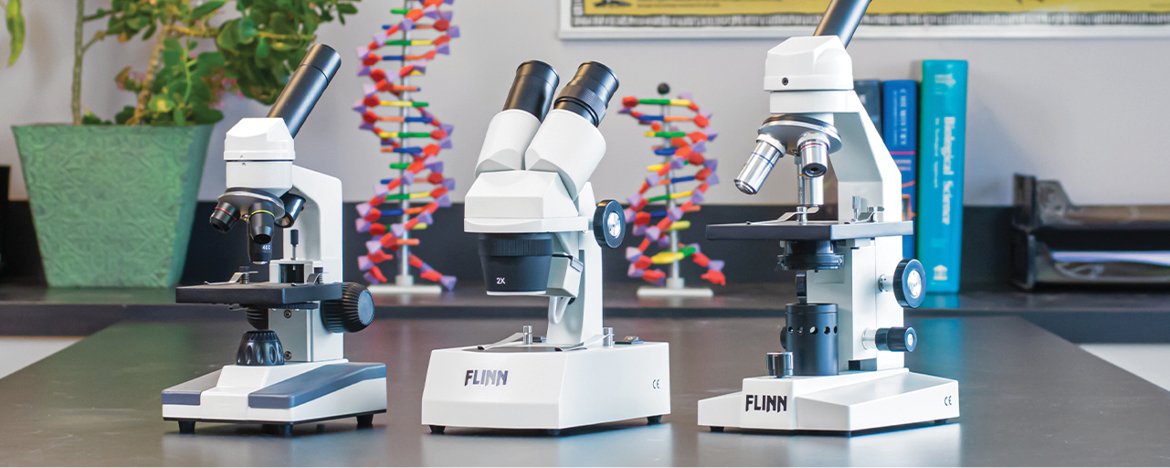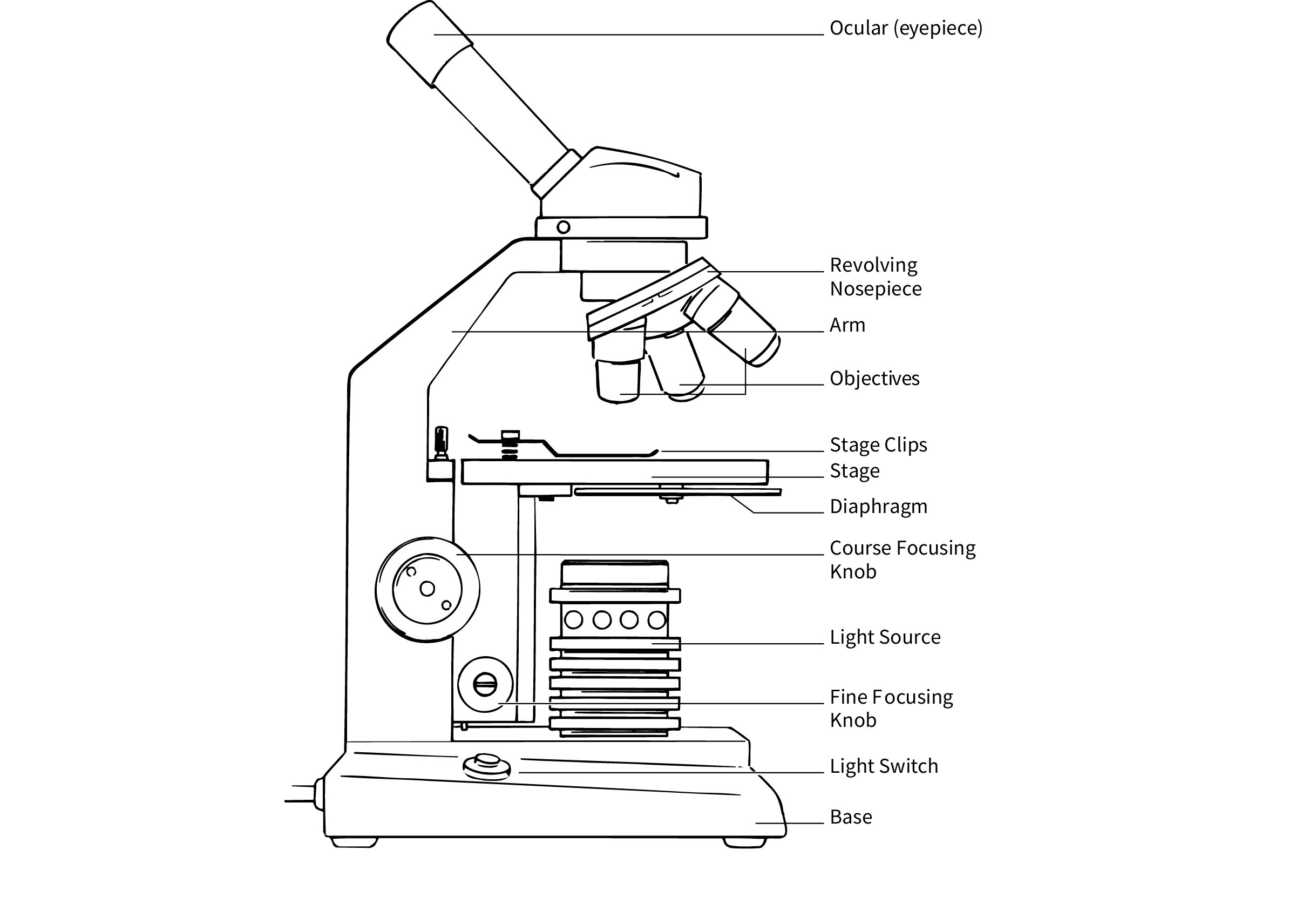

The most common laboratory scopes, the compound microscope (also referred to as light or compact microscope) and the stereomicroscope (also referred to as a dissecting microscope), have different uses.
Compound microscopes have a glass lens contained in the ocular (the eyepiece typically has 10X magnification), and a lens in each objective (4X, 10X, 40X, and 100X are the common objectives found in microscopes used in education, although not all microscopes have a 100X objective). Magnification is simply the ratio of the object size viewed through the lens to that of the actual size of the object.
Essentially a compound microscope is a high magnification microscope that uses 2 lenses to compound (multiply) the level of magnification. The first lens is referred to as the objective lens and typically has a 4x, 10x, 40x or 100 magnification ability). The second lens is known as the eyepiece lens. This lens compounds or multiplies the magnification of the objective lens by another 10x resulting in a total magnification of 40x, 100x, 400x and 1000x.
In short, a compound microscope is a high power microscope that uses two lenses to increase magnification of tiny objects that would otherwise not be observable.

Compound microscopes are tools which allow the human eye to view tiny objects that would otherwise not be observable. Becoming familiar with the functional parts and terms of the compound microscope is a great way to increase you understanding. See below for these parts and terms for a compound microscope.


| Term | Definition |
| Coarse Focus | Used with the low power objective to find and focus on a sample. |
| Depth of field | The ability of a lens to furnish an image above and below the focal plane; depth of field decreases with the increase in aperture or with an increase in magnification. |
| Diaphragm | A rotating disc under the stage with varying-sized holes. Controls the amount of light that may pass through the sample. |
| Field of view | A rotating disc under the stage with varying-sized holes. Controls the amount of light that may pass through the sample. |
| Fine Focus | Used with the intermediate and high power objects for minor focusing adjustments. |
| High power | The high power objective in the nosepiece of the microscope. Usually the objective in the 40X range is called the high power objective. If the scope has an oil immersion lens (100X), then the 40X is not referred to as the high power objective. |
| Intermediate power | The middle power objective; usually 10X. |
| Low power | The lowest power objective; usually 4X. |
| Magnification | The number of times the image of an object is increased in size by a lens system. |
| Parfocal | When rotating from one objective to another only requires a small, fine-focus adjustment to be in focus. |
| Ocular lens | The lens closest to the eye; also called the eyepiece. |
| Objective lens | Any one of the compound lenses mounted on the nosepiece. |
| Oil immersion lens | A high power objective (usually 100X) which requires an oil medium to focus the maximum amount of light when in focus. |
| Resolving power | The capacity of the optics to distinguish and separate fine detail, i.e., two points. |
| Stage clips | Hold the slide in place while viewing. |